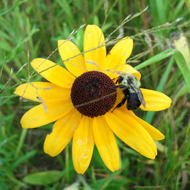Quarterly Schoolyard Investigations K-5
(View Complete Item Description)The following six OERS for grades K-5 are designed for teachers to use the outdoor spaces around their schools for learning with the goals of connecting students with their sense of place and well-being. Together, the six experiences comprise a school-wide mini-unit in which each grade level explore an Investigative Question. Collectively, each Investigative Question leads the entire student body in considering the Essential Question of the mini-unit. A school leadership team identified the Wisconsin Standards for Environmental Literacy and Sustainability (ELS) to be addressed at every grade level and developed an Essential Question to be explored.FIELD Edventures educators provided teachers with an introduction to outdoor, place-based inquiry learning, unpacked ELS, and met with grade level teams to co-create inquiry questions (called Investigative Questions in the lessons that follow) for their students to investigate outside each quarter. These OERs were co-taught with teachers and FIELD educators and were refined during co-reflection.
Material Type: Activity/Lab




















